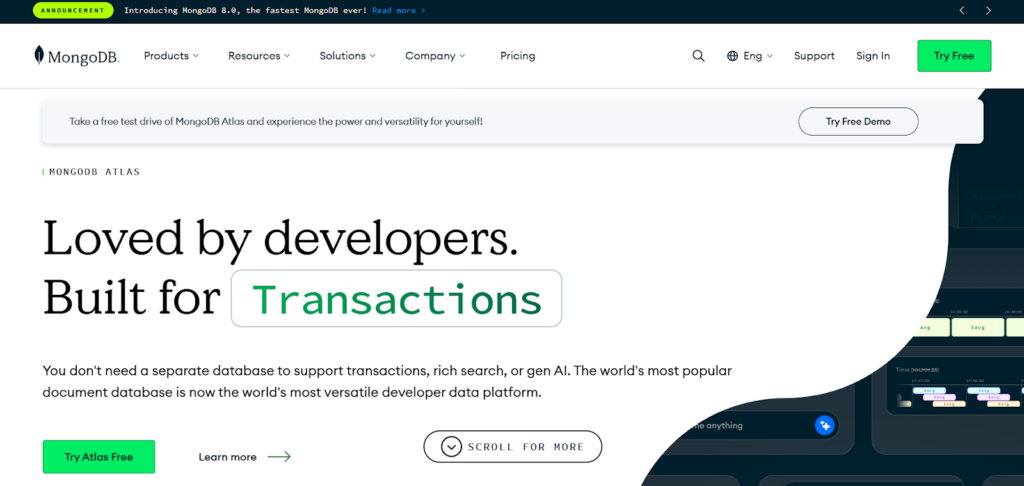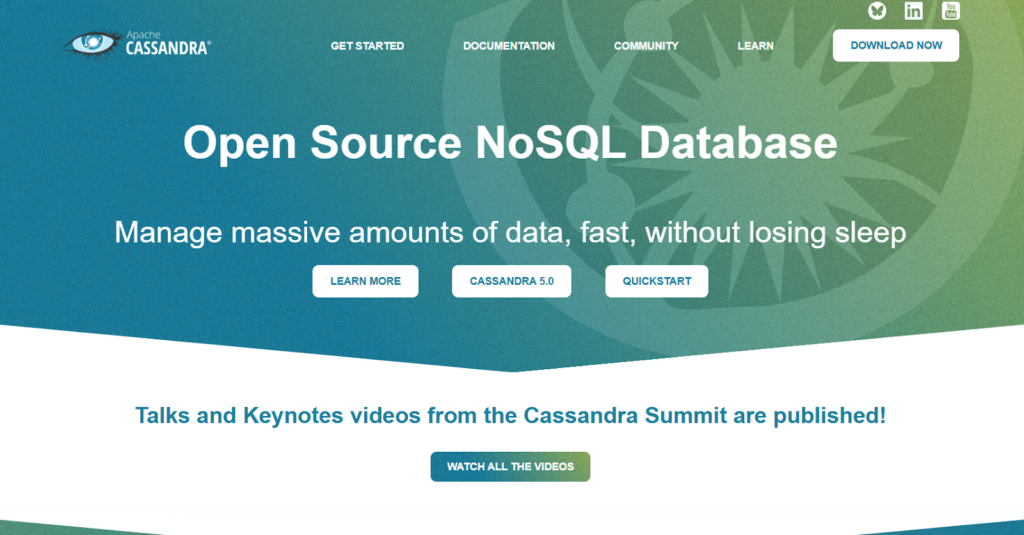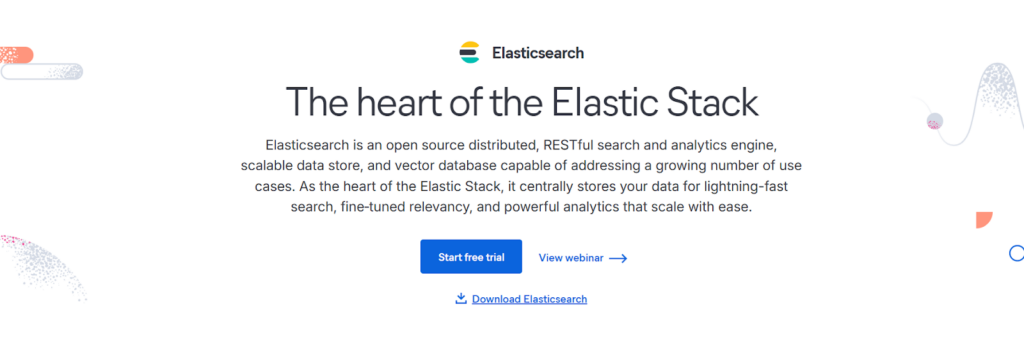What is NoSQL? Explore Its Features, Types, and Benefits
By Alex Carter on September 24, 2024
NoSQL databases offer a scalable solution for managing unstructured and semi-structured data. Unlike relational databases with fixed schemas, they support dynamic data models and horizontal scaling. Common in modern applications, they prioritize performance and flexibility. Understanding their features and use cases helps determine their suitability for specific data needs.
What is NoSQL?
NoSQL is a database management system (DBMS) for storing and managing large volumes of unstructured and semi-structured data. Unlike relational databases, which rely on predefined schemas and table structures, NoSQL databases use adaptive data models that expand horizontally to accommodate growing data needs.
Initially, NoSQL referred to “non-SQL” or “non-relational” databases. However, the name now indicates “not only SQL,” indicating the vast diversity of database systems and data types that NoSQL allows.
NoSQL Database Types
NoSQL databases come in several types, each suited for different data storage needs. Here are the most common ones:
Document-Oriented Databases
These databases, like JSON, store data as key-value pairs. The values might be simple or complicated, including nested objects. This structure qualifies them to analyze semi-structured or unstructured data, particularly when dealing with hierarchical relationships or several data models.
Key-Value Databases
Key-value databases store data as unique keys associated with distinct values, allowing for quick data retrieval. They are commonly used for caching, session management, and other applications that need rapid read and write operations, and they frequently store data in memory to boost performance.
Wide-Column Stores
Unlike relational databases, which have set table architectures, wide-column stores arrange data into tables with several columns in each row. This configuration enables efficient data storage and retrieval. These databases also utilize column compression to improve efficiency, making them ideal for handling massive datasets.
Graph Databases
Graph databases store and manage the connections between data points. They represent data using nodes (entities) and edges (connections). This method is beneficial for applications that examine relationships, such as social networks, fraud detection, and recommendation engines.
Multi-Model Databases
These databases enable several NoSQL data models in a single system, allowing developers to employ alternative models based on the application’s requirements without having to manage separate databases.
Managing Relational Data in NoSQL Databases
Since most NoSQL databases do not support joins, data relationships must be handled differently. There are three main approaches to managing relational data in NoSQL systems.
Multiple Queries
Instead of getting all data in one query, several inquiries are frequently utilized to acquire the essential information. This strategy can be efficient because NoSQL queries are often quicker than SQL queries. However, if there are too many questions, alternative methods may be more appropriate.
Caching, Replication, and Denormalization
NoSQL databases frequently store real values as well as associated data, rather than just foreign keys. A blog comment, for example, may include both the username and the user ID, eliminating the need for a separate query. This approach improves read efficiency but necessitates frequent updates when data changes, making it more appropriate for read-intensive applications.
Nested Data Structures
Document databases like MongoDB often store related data within a single document. For example, blog comments may be embedded directly within a blog post document, allowing retrieval of all related data in one request. This method simplifies queries but may lead to larger document sizes.
When to Use SQL vs. NoSQL
The individual demands of an application determine whether SQL or NoSQL should be used. Some cases require the structured approach of SQL, whilst others benefit from NoSQL’s flexibility and scalability.
When to Use SQL
SQL databases are ideal for managing structured data with complicated connections. They adhere to ACID compliance, assuring dependability and consistency, which is critical for:
- Financial transactions – Banking, payment processing, and accounting systems;
- Healthcare data analysis – Managing patient records and regulatory compliance;
- Customer and transaction information – CRM systems and business reporting.
For maintaining database performance and reliability in these applications, MySQL database monitoring plays a key role in tracking query execution, resource utilization, and potential issues.
When to Use NoSQL
NoSQL databases are built for applications that need to rapidly expand, maintain high availability, and process varied data types. They are ideal for:
- Mobile, web, and IoT applications – Handling real-time interactions and large user bases;
- Real-time web applications – Supporting chat, social media, and collaboration tools;
- Personalization and recommendations – Delivering user-specific content and experiences;
- Inventory and catalog management – Managing large, dynamic datasets;
- Fraud detection and identity authentication – Analyzing real-time patterns for security;
- Ad tech – Processing large volumes of ad impressions and user interactions.
Querying Non-Indexed Fields in NoSQL Databases
NoSQL databases handle queries on non-indexed fields in various ways, with some doing full-table or collection scans before applying filters. While this can reduce efficiency, many newer NoSQL systems have features that improve query performance.
MongoDB supports compound indexes and query optimization strategies.

Cassandra provides secondary indexes and materialized views for improved query flexibility.

Redis uses custom indexing mechanisms tailored to specific use cases.

Elasticsearch relies on inverted indexes for efficient text-based searches but may still require full scans for non-indexed queries.

Most NoSQL databases prioritize scalability and rapid key-based lookups above optimum querying of random variables. As a result, the database type and implementation influence the ability to do complex queries like joins and filters.
Advantages of NoSQL Databases
NoSQL databases offer benefits that enhance efficiency and performance across various applications.
- Unlike relational databases, which require costly licenses and hardware to expand, NoSQL allows for horizontal scalability, maximizing resources while lowering expenses;
- It supports dynamic data structures and quick scalability, making it perfect for frequent updates and changing business requirements;
- Built-in replication distributes data across many servers, resulting in high availability and minimal downtime;
- It supports quick data processing, making it ideal for high-traffic applications such as e-commerce and mobile platforms.
NoSQL databases offer scalability, speed, and robustness, making them indispensable for contemporary applications.
When to Avoid NoSQL Databases
NoSQL databases are appropriate for some applications, but they may not be the ideal choice for those requiring structured relationships, complex queries, or strict data consistency.
- Structured Data Requirements: Finance, accounting, and ERP systems require structured and normalized data to maintain accuracy and prevent duplication. NoSQL’s de-normalized structure is not suited for these applications;
- Complex Queries: NoSQL performs well with simple queries but does not support advanced joins, subqueries, and nested queries, making relational databases a better choice for handling complex data relationships;
- Combining Databases: Some businesses use both relational and NoSQL databases to meet different needs, ensuring scalability while maintaining data integrity.
Common Use Cases for NoSQL Databases
NoSQL databases support the development of high-performance mobile, IoT, gaming, and web applications, delivering smooth and efficient user experiences at scale. Their diversified designs adapt to a wide range of use cases, making them an excellent solution for current applications. While there are several implementation options, the following examples show essential use cases, providing insight into how different NoSQL databases might suit certain requirements.
Real-Time Data Processing
NoSQL databases support real-time analytics, customization, and recommendation engines. For example, Disney+ manages its large digital content library with NoSQL technology, providing targeted suggestions and user-specific features like Continue Watching and Watchlist at scale.
Cloud Security & Threat Detection
Graph-based NoSQL databases can detect subtle connections among massive datasets, making them ideal for security applications. Wiz, for example, uses a graph database to examine cloud security risks, rapidly detecting and mitigating possible attacks based on interrelated risk indicators.
High-Availability Applications
NoSQL databases provide applications with low latency and high availability, such as messaging, social networking, and file sharing. Snapchat, which has over 290 million users, employs NoSQL databases to manage billions of messages each day, resulting in a 20% reduction in median message delivery latency.
Conclusion
NoSQL databases offer scalability and flexibility for handling large, unstructured data. They excel in high-traffic applications, support dynamic data models, and ensure availability. While not ideal for complex queries, their speed and adaptability make them essential for industries needing fast, efficient data processing. Choosing NoSQL wisely helps businesses manage data effectively.
Posted in blog, Web Applications
Alex Carter
Alex Carter is a cybersecurity enthusiast and tech writer with a passion for online privacy, website performance, and digital security. With years of experience in web monitoring and threat prevention, Alex simplifies complex topics to help businesses and developers safeguard their online presence. When not exploring the latest in cybersecurity, Alex enjoys testing new tech tools and sharing insights on best practices for a secure web.
